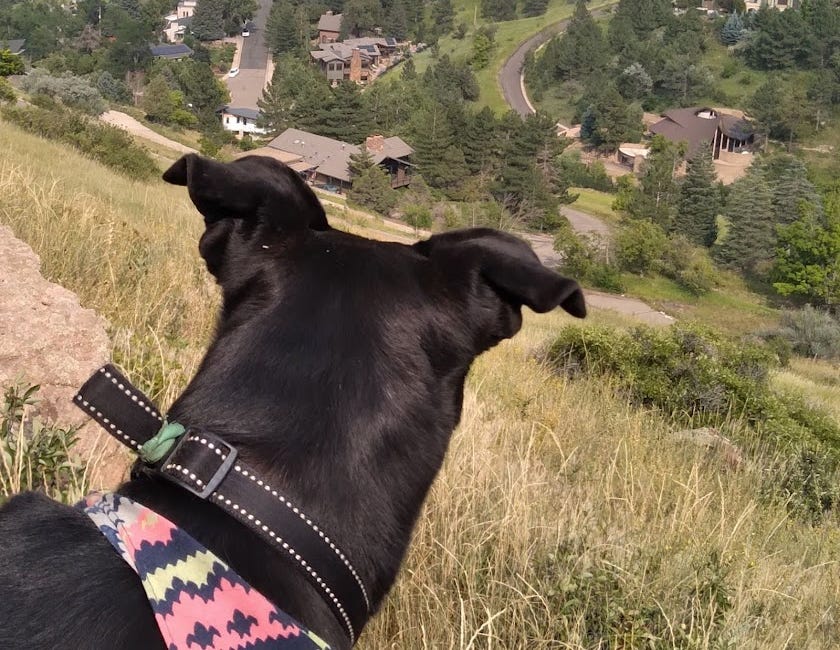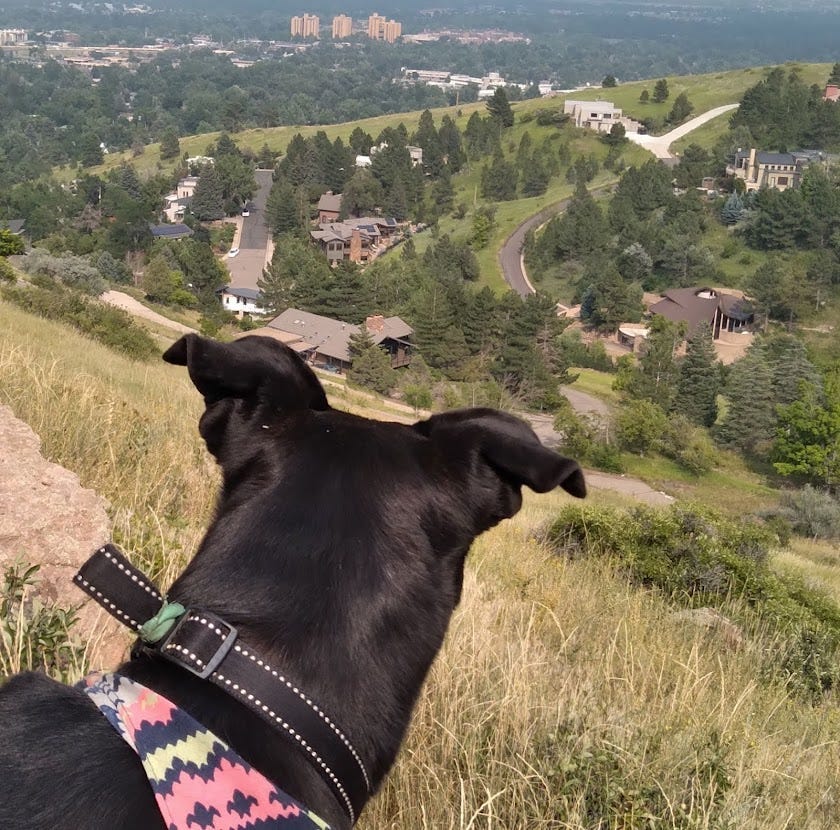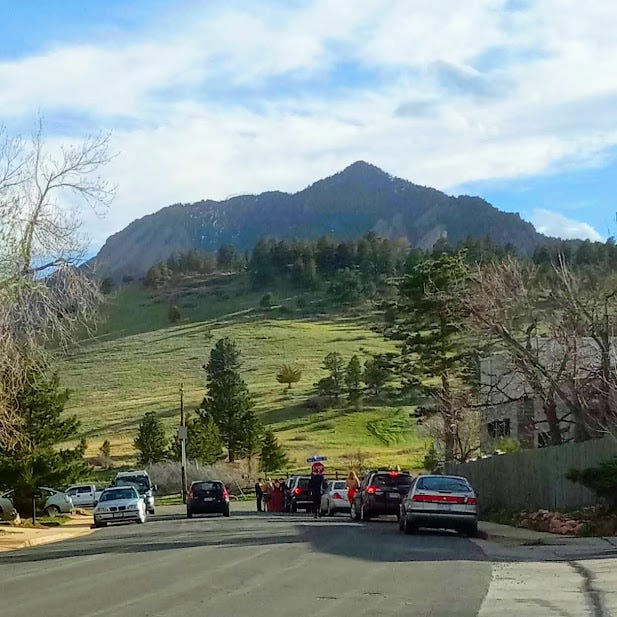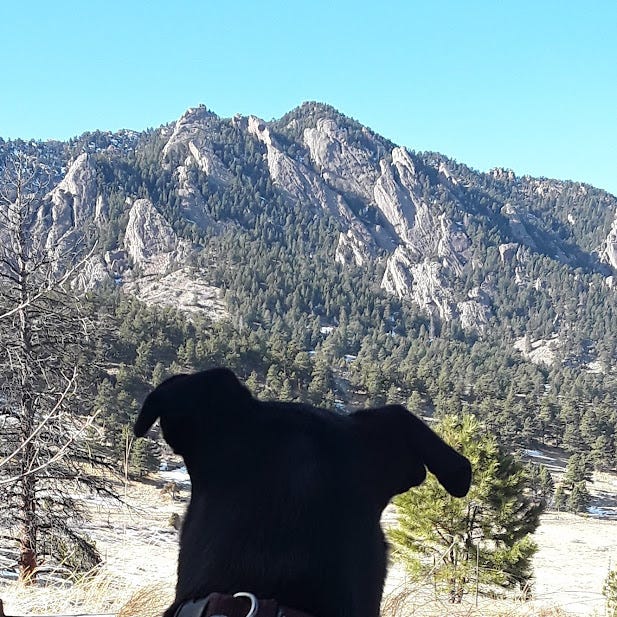Boulder's "Blue Line" remains the city's defining element
The work of a handful of progressive scientists and their allies is the seldom-credited reason so many runners can enjoy thousands of acres of unpopulated Boulder County land
Almost two years ago, I explored the tale of a luxury mansion in Boulder’s Upper Chautauqua neighborhood that was built for a husband-wife biochemist couple who never moved into the home.
To review: Marvin Caruthers became very rich after developing techniques for manufacturing DNA from its constituent monomers and becoming one of the founders of Amgen Pharmaceuticals, the original provider of synthetic erythropoietin (EPO), in the 1980s. But when Caruthers’ wife Jennie passed away in 2012, he apparently decided not to reside in the already built mansion, which has remained on the market for years and is on offer today for almost $13 million. (Some holding company is paying about eighty grand a month in property taxes on that thing, along with library-district taxes and a host of other fees.)
The Jennie Smoly Caruthers Building is the most elegant and prominent feature on the University of Colorado’s tech-centric East Campus. I can see it from the end of my street. One of the possible reasons for its prominence and elegance is Marvin Caruthers’ $20 million donation to C.U. in 2007.
Below is a view of the neighborhood and beyond from a spot named Enchanted Mesa, within the vast open space within and around the 24 square miles of city proper. The spot where this was taken is around 6,000’ above sea level. [Note: This photo was omitted in the e-mailed version of this entry, because most of it is visible in the preview of the 2020 post above.]
The photo below was taken on Saturday. The people in the foreground were probably headed for Fairview High School’s prom. The landform rising directly behind them, nestled in the saddle between Bear Mountain and Green Mountain, goes by Table Mountain; you can’t see it here because solid earth is in the way, but atop the mesa is the National Center for Atmospheric Research (NCAR), one of the most important facilities of its type on the planet.
This photo was taken at the top of Vassar Drive, which is close to 5,750’ above sea level. Table Mountain reaches to about 6,200’ or so above the unseen ocean of one’s choice. Bear Mountain, behind Table Mountain from this perspective, reaches to nearly 8,200’.
Were it not for an invisible barrier called the Blue Line, the top photo would likely have been impossible because the spot from which it was taken would be in someone’s yard. If not for this invisible line, which approximates a contour interval 5,750’ above sea level, NCAR wouldn’t be there. Mansions—many of which would have been torched by wildfires by now—would be dotting that entire slope, and the gorgeous view from Enchanted Mesa would be a private one.
In 1959, a physicist named Al Bartlett—whose major platform ultimately became population control—and a mathematician named Robert McKelvey decided to try to stop the encroachment of human residences up the slopes of Bear Mountain, Green Mountain, Flagstaff Mountain, and Mount Sanitas. The two of them spearheaded an effort that bucked the city council’s wishes and resulted in a new policy: The city would not provide water to homes built above 5,750’.
The creation of the Blue Line spurred the formation of Plan Boulder County and the preservation of 45,000 acres just within the City of Boulder for open space. That’s seven square miles of land, almost a third of the total of 24 square miles people are permitted to build structures on, not that any more room really exists for this anymore. Also limiting development is Boulder’s a 55-foot building-height limit, which the University of Colorado, being a state-operated entity, is allowed to ignore.
The complexion of Boulder would be vastly different if not for the open space and especially the Blue Line. I know nothing about real estate, but it makes sense that if people run out of land to build homes on in a place where a lot of wealthy people want to live, they can still make money, should that be the goal, by upgrading existing homes beyond classical recognition.
That’s why if you drive though any Boulder neighborhood built right against the foothills, you’ll see a line of white pickup trucks and portable toilets, two sure signs of home construction. It’s common—or was until the housing market cooled—for people to buy $2 million homes just to turn them into $4 million homes and sell them. Often, both the buyers and the sellers in such transactions are Douchenugget-Americans from California. That house you can see part of in the photo above is worth over three million dollars; it looks plenty nice from the outside, but it wouldn’t sell for half of that in most housing markets.
This project was the work of genuine progressives. It not only took vision but overcoming the will of various people in charge of Boulder through both persuasion and determination. It’s understandable why so many local old-timers are bemused by today’s local “activists,” who think hanging a bedsheet reading WHITE SILENCE IS VIOLENCE in a window at the end of a cul-de-sac will spur positive and necessary society-wide changes.
Blue Line co-architect Bartlett, who died in 2013, wrote a reflection on the Blue Line in 2000.
At one point, a member of the City Council spoke to me, advising me in a thoughtful and fatherly way about matters of city government. He pointed out that one should not put things such as the Blue Line in the City Charter because then it would be sort of cast in stone and it would be difficult to modify and change as circumstances might require. He said it would be better to trust the City Council, and if members of the Council voted to do something that violated the intent of the Blue Line, then we should campaign to attempt to unelect the offending Council members at the next election. I thanked him kindly; we discussed his recommendation, but we knew that we had to have the Blue Line in the City Charter. Then it would be safe and it could not be overturned by pressures exerted on the City Council. Once in the City Charter, the Blue Line could be amended only by a vote of the people of Boulder.
In 2006, Bartlett also wrote the obituary for his friend and colleague Wesley Brittin, another University of Colorado physicist and the founder of C.U.’s engineering department. I majored in physics and had a work-study job in the department for almost two years, so I have some understanding of what a pain in the ass it has to be to be the head of any academic department and be in charge of getting it funded, when all you would rather do is speculate about the nature of subatomic particles and leave anything related to grant-hounding and bookkeeping to functionaries elsewhere on campus. But if he didn’t enjoy that part of his job, he had a pretty cool daughter to come home to.
South Boulder, which includes Vassar Drive, is the first part of the city I got to know well after I first wandered out here in 2009. There may be no more lots on which to build houses, but in just the past dozen years or so, the street has changed a great deal. A lot of scientists used to live on this hill, back when no one (except maybe Al Bartlett and his friends) foresaw the explosion in property values that would transform the city and continues to do so. At least one Nobel Prize winner used to live here; one very-well-known nonfiction writer, in fact probably the best “outdoors” journalist in the world over the past thirty years, still does.
But while Boulder’s population has necessarily stabilized at around 105,000, its complexion has changed. Every time some old hippie or First Running Boom marathon dies or moves away, he or she is on average replaced by an out-of-stater who is intent foremost on driving up the value of the purchased property, not living in it and developing ties to the community. Vassar Drive has been a de facto construction site for years.
But tucked safely up and behind all that buzzing and sawing is a permanent—we* hope—feature of the area, one that users of this open space take for granted because it’s essentially why they choose to live here. It is good to remember often that land never protects itself; humans with a lot of money—say, developers—are not known for being especially fond of protecting it, and it is left to those with humbler origins to resist their implacable trespasses into exurban sanctuaries.





